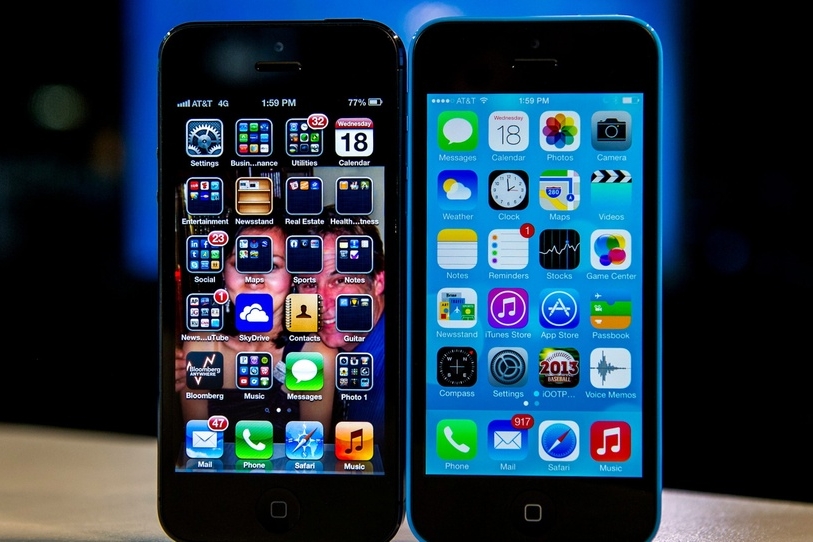To this day, the iOS operating system still maintains many design elements first introduced in iOS 7 released in 2013.
The object-simulating, blocky design on iOS 6 (left) is replaced by flat icons on iOS 7. Photo: Bloomberg.
“I think there is a profound and lasting beauty in simplicity,” said Johny Ive, Apple's design guru, as he introduced iOS 7.
The video then revealed a completely different operating system than what users were used to seeing on the iPhone. iOS 7 changes the look of nearly every app, ditching the realistic object-based design for a simplified icon design with lots of empty space.
The design elements introduced in the 2013 release still form the basis for what we see on the iPhone today.
iOS 7 completely changes the iPhone's home screen. The icons are flatter, with more bright reds, greens, and blues, making the home screen look brighter. The phone's signal bar has also been simplified to five dots.
The 2013 OS version was also the first time Apple added translucency in iOS, such as when opening multitasking or opening Control Center, creating a sense of layering.
“A lot of the criticism around iOS 7 focused on the initial release: fonts were too thin, icons were inconsistent, animations took too long. But this is normal for any new design language, it takes time to perfect,” Janum Trivedi, design engineer at The Browser Company, told The Verge.
And Apple has tweaked many elements of iOS’s interface over the years, but the core idea has largely remained the same. App icons on iOS are still pretty flat, with lots of white space inside apps and some translucent windows, like in Safari and Messages.
“Over the years, the design language has matured, and the novel elements of iOS 7 have become part of the foundation of all Apple designs today: translucency, liveliness, interactivity, animation, depth,” Trivedi said.
iOS 7 also introduced new features that have become staples of iOS, such as Control Center. This feature was initially criticized by some users as being cluttered, but with redesigns in iOS 10 and 11, Control Center is now an integral part of the phone, providing quick access to commonly used settings.
AirDrop, which debuted in iOS 7, has become a staple way for users to easily transfer files, photos, and videos between Apple devices. The Camera app in iOS 7 first allowed users to switch between photo, square, panorama, and video modes with a swipe. This control is still maintained today.
After more than 10 years, phone users have new demands, such as personalization. Some photorealistic design apps are starting to gain popularity again. With iOS 16, Apple has given people some options to customize their iPhones, but the company still tends to be conservative and safe with iOS design, according to Enid Hadaj, an independent iOS app developer.
“A decade later, I still can’t believe that the iOS 7 design style is still present in new versions of iOS. Sometimes I can’t tell the difference between iOS versions because they look so similar,” Hadaj said.
According to Zing
Source


































































































Comment (0)